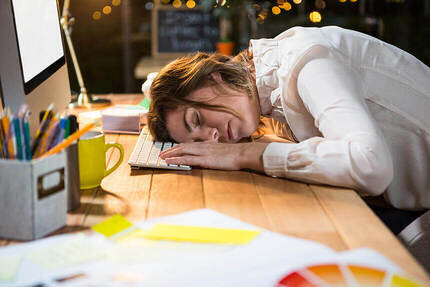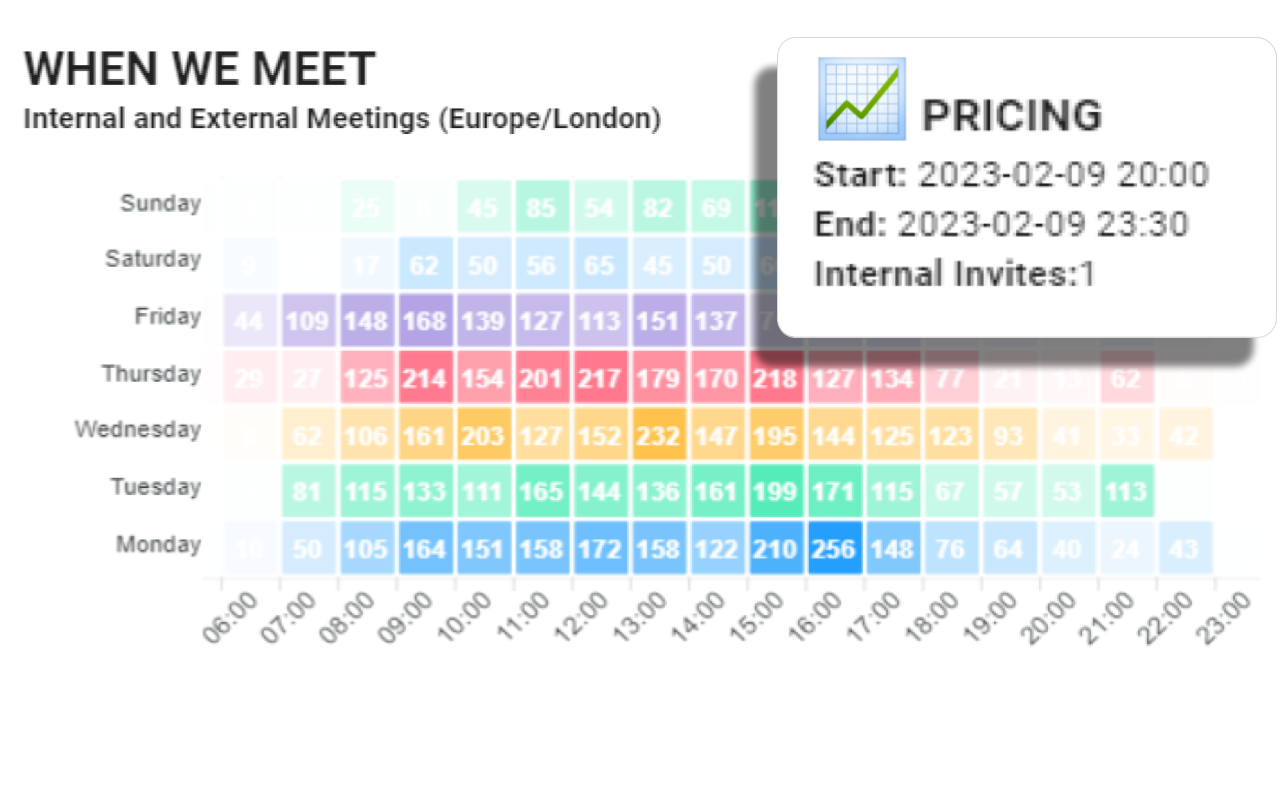Meeting Culture 2.0: Transforming Unproductive Meetings with Data
Transform unproductive meetings with actionable insights and improve productivity and collaboration with Flowtrace's meeting analytics solutions....
Discover why no-meeting policies fail and proven alternatives. Reduce meeting overload by 60% with analytics-driven strategies that actually stick.
In an effort to combat meeting overload and promote productivity, many companies have adopted "No Meeting" policies, designating certain days or times as meeting-free zones. The intention behind these policies is to provide employees with uninterrupted time for focused, deep work. However, in practice, these well-intentioned policies often backfire, leading paradoxically to even more meetings being scheduled.
Why does this happen? The reason is more logistical than psychological. Consider this scenario: you're trying to schedule a meeting with several participants, some of whom might be external partners or clients. You find that everyone's calendars are packed, making it difficult to find a common free slot. Then you notice the "No Meeting" afternoon on Friday - everyone is free then. It's tempting and logistically easier to schedule the meeting during this time, despite the policy. This way, the "No Meeting" times can inadvertently become the go-to times for scheduling meetings.
Meeting data insights solve this by revealing actual patterns in your meeting data. Furthermore, as we improve our meeting culture and make our meetings more effective, we can truly take advantage of these meeting-free times for deep work.
In this blog post, we will explore why "No Meeting" policies often fail, and how meeting metrics, particularly those provided by Flowtrace, can help us address this issue.
The Rise of "No Meeting" Policies
Recent 2025 research shows that employees now spend an average of 392 hours per year in meetings, with Microsoft data revealing a 192% increase in virtual meetings since 2020. Atlassian's 2024 research found that 62% of workers attend meetings without even knowing their purpose, while 57% report "meeting fatigue" as a primary productivity barrier.
The problem: too many meetings, often unproductive, are eating into valuable work time.
This not only hampers productivity but can also lead to employee burnout and dissatisfaction.

In response to the issue of meeting overload, many companies have adopted "No Meeting" policies. These policies designate certain days or times - such as Friday afternoons or entire days like "No Meeting Wednesdays" - as meeting-free zones. The goal is to provide employees with large blocks of uninterrupted time for focused, deep work, free from the distractions and interruptions of meetings.
Companies like Shopify (which eliminated all recurring meetings in 2023), Buffer, and GitLab have pioneered "meeting-free" approaches, while newer companies like Linear and Notion have built default async-first cultures that minimize synchronous meetings. They are seen as a proactive step towards better time management and increased productivity. However, while the intention behind these policies is commendable, they often don't work as expected in practice. Let's explore why.
"No Meeting" policies are a well-intentioned attempt to curb the excesses of meeting culture. However, they often fall short of their goal for several reasons:
1. Lack of Flexibility: Work schedules, especially in global companies, are complex and varied. A "No Meeting" policy might work for one team but could be impractical for another, especially if they need to coordinate with clients or partners in different time zones.
2. Inadequate Communication: If the rationale behind the "No Meeting" policy is not effectively communicated, employees might view it as a top-down imposition rather than a beneficial practice. This can lead to resistance and non-compliance.
3. Overcompensation: There's a risk that employees might overcompensate for "No Meeting" days by cramming more meetings into the remaining days. This can lead to longer work hours and increased stress, defeating the purpose of the policy.
4. Misunderstanding of Productivity: The policy assumes that meetings are inherently unproductive and that eliminating them will automatically lead to more productive work. However, this overlooks the fact that meetings, when conducted effectively, can be a valuable tool for collaboration and decision-making.
5. Ignoring the Root Cause: The policy doesn't address the root cause of unproductive meetings - poor meeting management. Without addressing this issue, "No Meeting" policies can end up exacerbating the problem they are meant to solve.
The solution to this paradox lies in a more strategic approach to meeting management, one that is informed by data and insights. Let's look into how meeting data insights can help us navigate this paradox and truly optimize our meeting culture.
Meeting data insights offer a data-driven approach to understanding and improving our meeting culture. With AI-powered calendar and video call analysis becoming mainstream in 2024, companies can now automatically detect meeting load in near real-time, providing unprecedented insights into meeting effectiveness. Instead of blanket policies like "No Meeting" days, meeting analytics allow us to make informed decisions based on actual meeting data. Here's how:
1. Identifying Meeting Overload: Meeting analytics tools can help us identify patterns of meeting overload. Are there certain times of the week when meetings are clustered? Are some individuals or teams spending a disproportionate amount of time in meetings? With this information, we can take targeted actions to reduce meeting overload.
2. Optimizing Meeting Schedules: Meeting analytics dashboards can also help us optimize our meeting schedules. For instance, we can use data to identify the best times for meetings, taking into account factors like participant availability, meeting duration, and the nature of the meeting (e.g., decision-making vs. brainstorming).
3. Improving Meeting Efficiency: Meeting analytics can provide insights into meeting efficiency. For example, we can track metrics like meeting duration, participant engagement, and follow-up actions to assess whether our meetings are achieving their intended outcomes.
4. Encouraging Accountability: By making meeting data transparent and accessible, meeting analytics and transformation tools can encourage accountability. Teams can set goals for reducing meeting time or improving meeting efficiency, and track their progress over time.
5. Informing Policy Decisions: Finally, meeting analytics can inform policy decisions. Instead of implementing a one-size-fits-all "No Meeting" policy, we can use data to develop customized policies that address the specific needs and challenges of our organization.
In the next section, we'll explore how Flowtrace's meeting analytics platform can help us harness these benefits and truly transform our meeting culture.
Flowtrace's meeting analytics & transformation features are designed to provide the insights and tools needed to effectively manage and optimize your meeting culture. Here's how Flowtrace can help:
1. Comprehensive Analytics: Flowtrace provides a complete view of your meeting data, including meeting frequency, duration, participants, and more. This data can be analyzed at the individual, team, or organizational level, providing valuable insights into your meeting habits.

2. Identifying Meeting Overload: Flowtrace can help identify patterns of meeting overload, enabling you to take targeted actions to reduce unnecessary meetings. It can also highlight individuals or teams that may be experiencing meeting burnout, allowing for proactive interventions.
3. Optimizing Meeting Schedules: Flowtrace's analytics can help optimize meeting schedules, ensuring that meetings are scheduled at times that maximize productivity and minimize disruption. It can also help identify optimal meeting durations, helping to keep meetings focused and efficient.
4. Improving Meeting Efficiency: Flowtrace provides tools to track and improve meeting efficiency. For example, it can track follow-up actions and outcomes, helping to ensure that meetings lead to tangible results.

5. Customized Policies: With Flowtrace's analytics, you can develop customized meeting policies that address the specific needs and challenges of your organization. Instead of a blanket "No Meeting" policy, you can implement policies that are informed by data and tailored to your unique context.
By leveraging these features, Flowtrace can help you navigate the paradox of "No Meeting" policies, transforming your meeting culture and truly enabling your team to take advantage of meeting-free times for deep work. In the next section, we'll explore the benefits of effective meeting management.
Effective meeting management, powered by meeting transformation capabilities, can have a transformative impact on your organization. Here are some of the key benefits:
1. Increased Productivity: By reducing meeting overload and optimizing meeting schedules, you can free up significant amounts of time for focused, deep work. This can lead to substantial increases in productivity.
2. Improved Meeting Culture: With data-driven insights, you can improve the efficiency and effectiveness of your meetings, leading to a healthier meeting culture. Meetings can become a tool for collaboration and decision-making, rather than a source of frustration and burnout.
3. Enhanced Employee Satisfaction: Employees who spend less time in unproductive meetings and more time doing meaningful work are likely to be more satisfied and engaged. This can lead to lower turnover and higher morale.

4. Better Decision-Making: Effective meetings lead to better decisions. With meeting analytics, you can ensure that your meetings are focused, well-attended, and result in clear action items.
5. Greater Autonomy: With less time spent in meetings, employees have more autonomy to manage their own time. This can lead to increased creativity, innovation, and job satisfaction.
In conclusion, while "No Meeting" policies may not always work as intended, meeting analytics tools offer a powerful solution. By providing data-driven insights and tools, platforms like Flowtrace can help you navigate the paradox of "No Meeting" policies, improve your meeting culture, and unlock the true potential of your team.
"No Meeting" policies, while well-intentioned, often fall short due to the complex dynamics of scheduling and managing meetings in today's busy work environment. However, this doesn't mean we should resign ourselves to a culture of meeting overload. Instead, we can turn to data-driven solutions like meeting analytics to truly understand and improve our meeting habits.
Meeting analytics, particularly those provided by Flowtrace, offer a comprehensive view of our meeting culture. They allow us to identify patterns of meeting overload, optimize meeting schedules, improve meeting efficiency, and develop customized meeting policies that truly meet the needs of our organization.
By leveraging these insights, we can transform our meeting culture from a source of frustration into a powerful tool for collaboration and decision-making. We can ensure that our meetings are productive, our employees are engaged, and our "No Meeting" times are truly used for deep, focused work.
The future of work demands intentional meeting design. As companies navigate hybrid schedules and distributed teams in 2025, those who master meeting analytics will gain a competitive advantage through enhanced productivity and employee satisfaction. Start your meeting transformation with Flowtrace's advanced analytics today.
Transform unproductive meetings with actionable insights and improve productivity and collaboration with Flowtrace's meeting analytics solutions....
Cutting recurring meetings can boost productivity and employee well-being. Learn the benefits, downsides, and strategies for a meeting-free work...
Optimize meetings with Flowtrace Meeting Analytics to address common pain points, enhance efficiency, and drive team engagement. Learn how to improve...